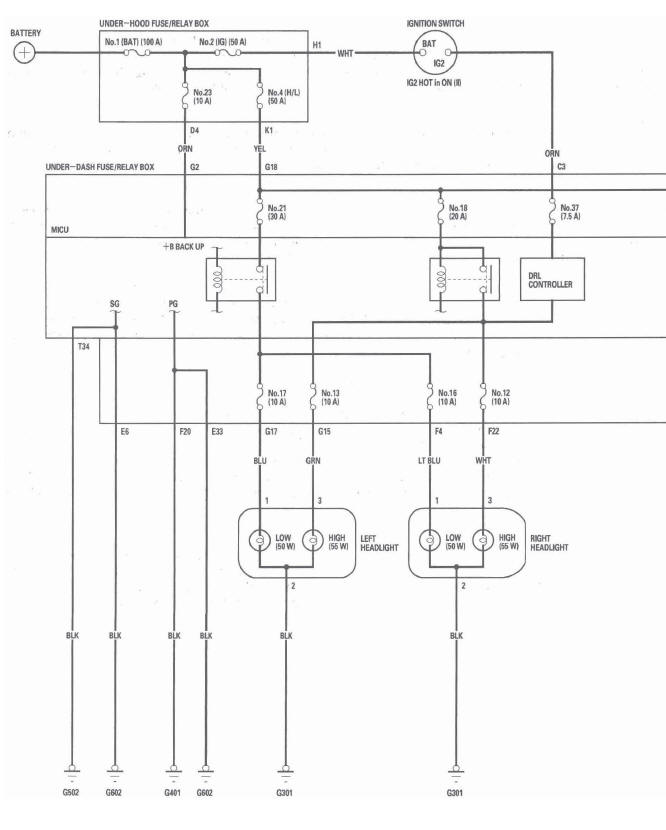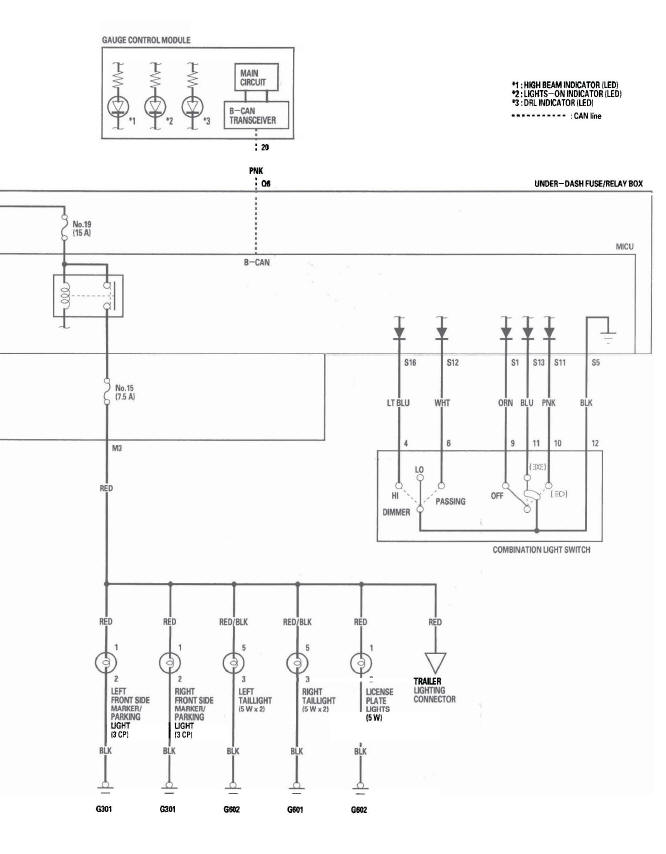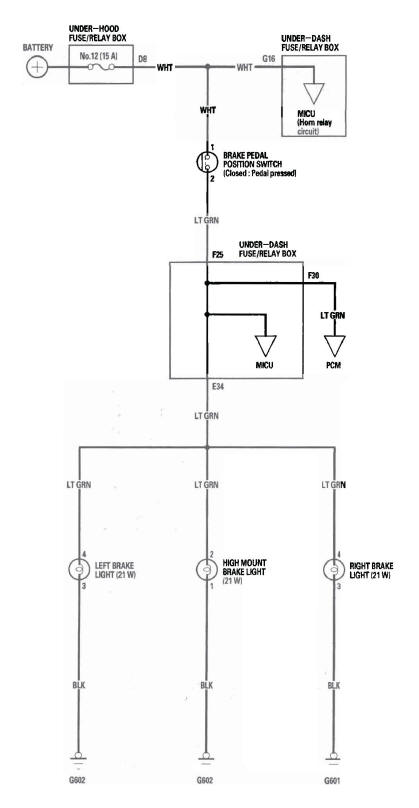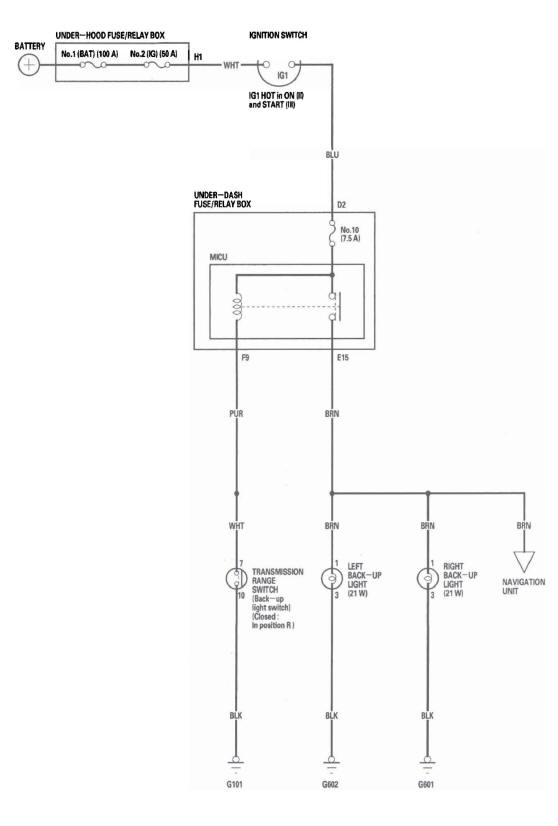Honda CR-V: System Description
Headlights System Description
The headlight system is composed of the MICU, the headlight and dimmer/flash-to-pass switches (inside the combination light switch), the left and right headlights, and the high beam indicator.
The MICU controls the headlights with a built-in low beam headlight relay and a built-in high beam control circuit based upon the position of the headlight and dimmer/flash-to-pass combination light switches.
Low Beams
When you move the headlight switch to the ON position and the dimmer/flash-to-pass switch to the low position, a ground signal is supplied to the No. 11 terminal of the under-dash fuse/relay box (MICU) connector S (20P). The MICU then energizes the low beam relay, supplying battery voltage to the low beam headlights, turning them on.
High Beams
When you move the headlight switch to the ON position and the dimmer/flash-to-pass switch to the high position, ground signals are supplied to the No. 11 and No. 16 terminals of the under-dash fuse/relay box (MICU) connector S (20P). The MICU then energizes the low beam headlight relay and activates the high beam control circuit, supplying battery voltage to the low and high beam headlights, turning them on.
Flash-to-Pass
When you pull the dimmer/flash-to-pass switch to the passing position, a ground signal is supplied to No. 12 terminal of the under-dash fuse/relay box (MICU) connector S (20P). The MICU then energizes the low beam headlight relay and activates the high beam control circuit for as long as the switch is held, supplying battery voltage to the low and high beam headlights, turning them on.
Daytime Running Lights System Description
The daytime running lights system includes the MICU, the left and right high beam headlights, and the DRL indicator.
The daytime running lights operate with the ignition switch ON (II), the headlights off (headlight switch OFF or in the parking position), and the parking brake released.
When the daytime running lights are on, the MICU turns the high beam headlight control circuit on and off (duty cycle), which provides a reduced voltage (approximately 6-8 volts) to the high beam headlights (via the No. 12 and No. 13 fuses in the under-dash fuse/relay box); the high beam headlights come on with reduced brightness. The MICU also supplies battery voltage to the DRL indicator, turning it on.
NOTE:
- The daytime running lights are disabled when the ignition switch is turned OFF. To keep the daytime running lights from coming on, apply the parking brake switch while the ignition switch is OFF. When you then turn the ignition switch back ON (II), the daytime running lights will not come on until the parking brake is released.
- The headlights revert to normal operation when you turn them on with the headlight switch.
Circuit Diagram


Circuit Diagram - Brake Lights

Circuit Diagram - Back-up Lights


